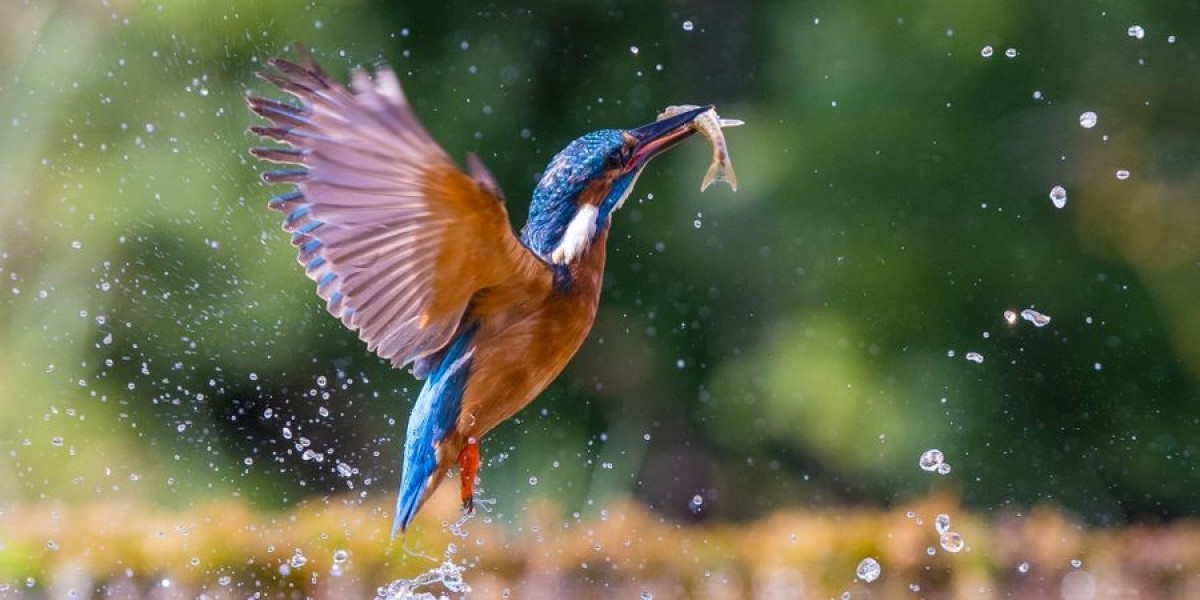Wildlife photography is tricky to get right. Its subjects are unpredictable, the elements can work against you, and it takes a lot of patience and practice. But the rewards are worth it; natural beauty and fleeting moments can be captured and immortalised forever.
If you want to take photos that do your subjects justice, you need the proper tools. Smartphones may be convenient for capturing unexpected opportunities, but a smartphone camera won't give you the quality and flexibility you need for exceptional wildlife photography.
To really unlock your potential, you need a standalone camera, such as a DSLR or mirrorless model.
These cameras come with a host of extra features - including zoom lenses and adjustable shutter speeds - that open up your wildlife photography potential to more than just lucky timing. In this article, we'll explain how some of the features of a good camera will help you to freeze nature in a still.
What camera specs do I need to look out for?
1. Shutter speed
This is the amount of time a camera needs to take a photograph. Lightning-quick shutter speeds are essential to capture objects in motion, such as a bird in flight.
A slower shutter speed will produce a photograph with motion blur. This can be useful for arty, stylised shots - capturing long streaks of rain or a flying bird's blurry trail, say - but it can also be a frustrating and unwanted effect.
All good DSLR and mirrorless cameras should have fast enough shutter speeds to keep up with racing wildlife. For flying birds, speeds of between 1/8000th to 1/1000th of a second should freeze them in the frame.
2. Autofocus (AF)
This is where the camera uses sensors to automatically adjust the focus of the shot, constantly adjusting as subjects shift, leave and enter the frame.
Autofocus technology has become highly advanced. The OM-D E-M1 Mark III, for example, has 121 individual points, each of which is responsible for detecting subjects and altering the focus accordingly.
At the other end of the market, cameras might have a dozen or fewer AF points. We rate every camera out of five stars for its focusing performance, so pay mind to this rating when you browse for a device.
At more than £2,000, the OM-D E-M1 Mark III will need to deliver on more than just autofocus capabilities. Find out if it warrants its high price tag in our full OM-D E-M1 Mark III review.
3. ISO
The ISO level represents the sensitivity of your camera's sensor. Good cameras can reach higher ISO settings, and high numbers increase the camera's ability to take photos in low light (though the cost may be increased grain).
When you shoot, you can set the ISO to auto and choose a minimum shutter speed of 1/1000, which means that the camera will work to ensure brightness while still maintaining a fast enough speed. This will come in handy during odd hours, dim days, and dark spots, helping you to conquer the environment.
Discover which cameras impressed us most in our lab tests in our round up of the best DSLR and mirrorless cameras.
What camera lenses should I use?
The benefit of DSLR or mirrorless cameras is that they have interchangeable lenses. This means you can swap the lens that's bundled with your camera for one that maximises your chances of a great wildlife shot.
Fixed-lens cameras, like bridge cameras, compact cameras and phone cameras, restrict your ability to zoom in and focus on birds and animals at a distance.
For wildlife photography that lets you take close-up shops without having to get physically close, you'll want a telephoto lens; these have a long focal length.The definition of a telephoto lens varies between manufacturers, but you're looking at something that's 70mm or more.
Professional photographers may use lenses that can go as high as 800mm, but prices become staggeringly high. The price you're willing to pay is your decision to make, but - for most amateurs - between 70 and 200mm should suffice as a compromise between focal length and affordability.
You'll also come across zoom lenses. A zoom lens is one where you can change the focal length, meaning you can go from a wide-angle shot to a much closer one with a single lens. A zoom lens might have a range that can move between 18 and 200mm.
Zoom lenses may not offer quite as much close-up potential as a telephoto lens, but may be more flexible if you don't want to find yourself constantly switching between lenses.
Check out our guide to digital camera accessories for a full run-down of the peripherals you can buy to boost your camera's performance.
How to take a great wildlife photo
We could write a whole book about this and still not cover everything.Trial and error is key, and you'll need to practise to achieve any kind of mastery.
But if you have the right hardware, it's primarily a matter of skill, patience, and being in the right place at the right time. Here are some tips to get you started.
- Shoot at high shutter speeds so fast-moving creatures don't outpace your camera. The photo used a shutter speed high enough to freeze the owl in the frame.
- Consider your backgrounds. Cluttered, messy, or lurid backgrounds can detract from your photo, especially if the background is in focus and it comes out sharply. Play around with depth of field so only the foreground (and, in particular, the bird or animal that you're trying to photograph) is in focus.
- Shoot in bursts. High-end cameras are able to capture several frames per second, so put your device to work and then pick the best frame later on. Storage has also come leaps and bounds in the last decade, so we have more freedom to snap freely and choose later.
- Pay heed to the sun. In photography, light is everything, and the position and exposure of the sun will determine the quality of your photographs. Try to shoot with the sun behind you or to your side, rather than shooting into it.












